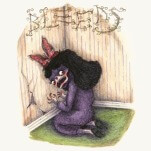What the Arctic Monkeys’ Discography Tells Us About Their New Record
The band announced their sixth album, Tranquility Base Hotel & Casino, on Thursday.
Photo: Getty Images
Erstwhile saviors of guitar rock Arctic Monkeys announced on Thursday that their sixth album, Tranquility Base Hotel & Casino, will have a May 11 release on Domino Records. Recorded in Los Angeles, Paris and London, the album marks the Monkeys’ first release since 2013’s AM, which was their biggest-selling album to date, reaching No. 6 on the US Billboard 200.
Upon its release, AM drew praise from critics, but also split the band’s rabid fan base. Some preferred their slicker, slower, vintage sound, while others pined for the loose garage swagger of their landmark 2006 debut Whatever People Say I Am, That’s What I’m Not. In his review for Paste, Robert Ham wrote that the band’s progression from rowdy teenagers to chart-topping veterans had produced “a steady heartbeat-like pulse inspired by the stoned expanse of acts like Black Sabbath and T. Rex, and frontman Alex Turner’s lyrics.” The first taste of Tranquility Base Hotel & Casino, via the album trailer below, hints at more sonic experimentation from Turner and Co., with synthy strings leading to a fuzzy guitar riff. Here’s a look back at the Arctic Monkeys’ evolution.
On the band’s 2006 Mercury Prize-winning debut, Whatever People Say I Am That’s What I’m Not, which led the second wave of post-millennial garage rock that followed The Libertines and Franz Ferdinand, Turner spun witty yarns of teenage romance and poetic observations of drunken nights out on the town in his distinct Yorkshire accent. Taking a page from Elvis Costello’s hyper-literate songbook, Turner’s charming, self-deprecating lyrics matched the album’s punchy guitar riffs and rapid-fire drumming, making it arguably one of the best rock albums of the past 20 years and one of the finest debut albums in rock history. Thrashing lead single “I Bet You Look Good on the Dancefloor” shot to No. 1 in the U.K. and immediately earned the band the label of British rock saviors—a blessing and a curse.
The 2007 follow-up, Favourite Worst Nightmare, preserved the speedy riffs and poetics of their debut, even taking it up a notch with jumpy singles like “Brianstorm” and “Fluorescent Adolescent,” the latter of which strained to match the pace of Turner’s sympathetic tale of an aging party girl who’s outgrown the electric boys. Looking a little shaggier and sounding a bit wiser after the success of the debut, Turner injected some wry music-industry cynicism on the elastic “Teddy Picker” and added a little crooning on “Only Ones Who Know.” Lyrically, Favourite Worst Nightmare is just as sharp, charismatic and romance-obsessed as the debut, but the maturity in the lyrics foreshadowed the sound evolution that would come on future releases.
Two years later, the Monkeys migrated to America and signed up Queens of the Stone Age mastermind Josh Homme to co-produce their third album, Humbug. The record shocked fans with a distinct new look and sound. The hair was longer, the clothes sleeker, and the sound considerably darker (as the title would suggest), more cinematic and more poetic than ever. Though it alienated some fans, Humbug is arguably the Monkeys’ most underrated and underappreciated album, with its Nick Cave-esque lyrical flourishes and tantalizing guitars with dark undertones indisputably influenced by the desert in which it was recorded. Lead single “Crying Lightning” cut the usual tempo in half but kept the riffs in place and added a Queens-inspired whining tremolo guitar. Though not every fan welcomed this departure in sound (slight though it was), it became a crucial album in the band’s canon.
In 2011, the band released the dubiously titled Suck It and See, with an austere cover and a new look that favored hair gel and leather. Despite the stark art and a chilly overall aesthetic, the album was noticeably sweeter than its predecessor, adding swooning, love-letter ballads like “Reckless Serenade,” “Piledriver Waltz” and “Love Is a Laserquest.” Although some darker grit remained on tracks like “Brick By Brick” and “Don’t Sit Down ‘Cause I’ve Moved Your Chair,” Suck It and See was dominated by Turner’s lyrics, still yearning to win over the heart of his lover, and by ever-tighter instrumentation distinguished by a cleaner, less produced rock ‘n’ roll sound. The album once again reached the top of the British charts, but it was their lowest seller at home, suggesting that casual fans were jumping off the bandwagon as the band’s sound evolved.
Two years later, everything changed. Though the band had achieved worldwide success up to this point, their sales were consistently falling, and they hadn’t managed to crack the American mainstream (much like their British predecessors Oasis and Blur, who always had a love-hate relationship with American charts). The Monkeys had their devotees in the U.S., but few could have foreseen the impact that the soulful AM would have on Western shores. The band’s fifth album was a resounding success, earning near universal critical acclaim and becoming one of the bestselling vinyl albums of the decade. While Suck It and See saw Turner truly embracing his rock-star bravado, consisting of a meticulously gelled pompadour and leather jacket (a stunning departure from Turner’s awkward Lacoste-collar look in 2006), it also saw him starting to drop his trademark Yorkshire accent.
By the time AM came around, fans almost unanimously agreed that the band’s recent time in America had began to rub off on them, and particularly on Turner’s voice. The album was still lyrically impressive with expressive tales of drunken booty calls, but its sexy groove, with brooding falsettos and quavering, slow-burn guitars (as on lead single “Do I Wanna Know?”) could hardly have been foreseen by their original fans. The band had gravitated toward vintage soul-riffage just as it was being revived on the radio by American bands like The Black Keys, which doubtless had a significant impact on the album’s reach in the U.S. (Homme once again made an appearance.) The Monkeys’ newfound success—including a platinum certification in America—and retro rock aesthetic inevitably lured a load of young fans who were less than interested in the band’s music.
After AM, Turner retreated to his side project, The Last Shadow Puppets, a duo with British singer-songwriter Miles Kane, for their first album since 2008 debut The Age of the Understatement. In 2016, TLSP released Everything You’ve Come to Expect, bringing back the dramatic orchestral arrangements of Owen Pallett (Arcade Fire, Grizzly Bear), expanding on the provocative lyrics of AM and reviving the ‘60s pop influences of the duo’s debut. Fast forward to 2018. It’s five years since AM, so where do Arctic Monkeys go from here?
The photo accompanying the announcement of Tranquility Base Hotel & Casino reveals a decidedly older group of guys, with a certain “fireside chat in the the study” look and a beard on Turner that ages him about 15 years. Producer James Ford is once again behind the boards, having recently worked on albums by Depeche Mode and Mancunian synth-poppers Everything Everything. It might have been hard to imagine the Monkeys jumping on the synth-rock bandwagon headlined by LCD Soundsystem and Tame Impala, but the brief trailer we got with the album announcement does augur some spacey experimentation, with an atmospheric intro melting into a pulsing keyboard part and some distinctive fuzz. So does the brutalist artwork, with its Kubrickian space-age cover, and some futuristic song titles, like “Science Fiction” and the title track. The Monkeys did use keyboards sparingly on Favourite Worst Nightmare (notably on epic closing track “505”), a bit more on Humbug, and also on AM, though still in a guitar-centric model. Other new songs, like “The World’s First Ever Monster Truck Front Flip” and “She Looks Like Fun,” hark back to the band’s cheeky younger years. Whatever the case, Arctic Monkeys have never shied away from updating their core sound, and it sounds like LP No. 6 will continue to push their upward and outward trajectory.







































